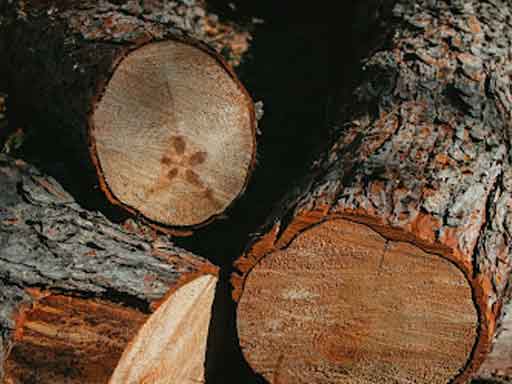In the world of woodworking, two pieces especially capture the essence of craftsmanship: the hollow wooden tube and the wooden hollow cylinder. Distinct in their formation, these structures are more than mere tools or objects; they embody art and utility harmoniously intertwined.
Unlike more solid, traditional wooden forms, hollow wooden tubes present challenges that test the expertise of even the most seasoned woodworkers. However, when crafted successfully, they emerge as unparalleled masterpieces, elevating both the aesthetic appeal and functional versatility of any space they inhabit.
Crafting the Perfect Hollow Wooden Tube
Crafting a hollow wooden tube is an art that combines precision, skill, and knowledge. We must consider several factors, including selecting the appropriate wood type to achieve the desired outcome.
Selection of Ideal Wood Types
Choosing the suitable wood is an essential first step in crafting a perfect hollow wooden tube. Here are some of the ideal wood types, along with their distinct properties and recommended uses:
Oak
Known for its strength and durability. It has a prominent grain pattern, making it suitable for decorative pieces. Its robustness makes it ideal for structural components.
Maple
Lightweight with a subtle grain pattern. Maple’s smooth finish makes it a top choice for tubes that require a refined appearance, such as musical instruments.
Cherry
Prized for its rich, warm color that deepens with age. Its natural beauty is perfect for crafting tubes meant to be showcased or used in high-end products.
Walnut
This wood combines strength and elegance with a dark hue and fine grain. It’s perfect for luxurious or specialty tubes.
Tools Required
To ensure a seamless crafting experience, it’s essential to be equipped with the right tools. Before embarking on this woodworking journey, make sure you have:
- A good quality saw
- Measuring tape
- Chisels of various sizes
- Sandpaper (from coarse to fine grits)
- Wood glue
- Clamps
- Lathe (optional, but greatly enhances precision and finish)
Step-by-Step Process
- Start by measuring and marking the desired length of your tube on the wood.
- With precision, use the saw to make an accurate cut.
- Carefully chisel out the center, ensuring a consistent thickness throughout.
- If you have access to a lathe, the hollowing process becomes notably smoother. Simply mount the wood and use chisels to hollow it out.
- Throughout the process, check the thickness regularly to prevent over-hollowing.
Finalizing your hollow wooden tube involves refining its texture and enhancing its durability. Begin by sanding the tube inside and out, transitioning from a coarse to a fine grit for the smoothest finish. Lastly, apply a protective coating like lacquer to fortify the wood and give it a radiant shine.
Variations: The Hollow Wood Tube
The hollow wooden tube is a unique piece of craftsmanship, reflecting the artisan’s skills and the wood’s inherent beauty. Yet, its variations in terms of craftsmanship and applications diversify its utility and appeal in the world of woodworking.
Differences in Craftsmanship
Despite their similar nomenclature, the hollow wooden tube and the hollow tube present unique characteristics rooted in the methods of their crafting:
Uniform Hollow Wooden Tube
Crafted with a keen emphasis on precision, this type showcases meticulous attention to detail, resulting in a product with perfect uniformity and symmetry. Its defining feature is the polished and consistent look, revealing a craftsman’s dedication to perfection.
Rustic Hollow Wood Tube
Contrasting the uniform variant, this type emphasizes a more organic and unrefined approach. It is designed to embrace the wood’s innate quirks and characteristics, resulting in a product that resonates with rustic authenticity. Instead of seeking to mask or alter these unique traits, this method celebrates them, letting the natural beauty of the wood shine through in its raw and untouched state.
These diverse approaches to craftsmanship highlight the versatility of wood as a material and underscore the array of skills and styles wielded by artisans in the field.
Suitable Applications
With their diverse designs and characteristics, hollow tubes find utility in many applications. They serve both functional and aesthetic purposes. For instance:
Lamp Stands: Their sturdy build and often elegant finish make them ideal central pieces for lighting fixtures.
Curtain Rods: A seamless blend of strength and beauty, hollow wood tubes provide both support and an aesthetic appeal to draperies.
Intricate Furniture Parts: Given their versatility, they can be crafted into legs for tables or chairs, railing elements, or even ornate bedposts.
Such vast applications stand testimony to the functional versatility and aesthetic flexibility of hollow wood tubes in contemporary design and utility.
The Art of Creating a Hollow Wooden Pipe
The hollow wooden pipe, much like its counterpart, the hollow wooden tube, is a product of intricate craftsmanship. Both are derived from the same root but differ in their primary objectives and utilities. Diving deeper, let’s unravel the nuanced differences between the two and understand the specialized crafting process of creating a wooden pipe.
Pipe Versus Tube: Understanding the Distinctions
At first glance, a hollow wood pipe and a tube might seem indistinguishable, but they serve distinct purposes. While tubes are often crafted with a focus on symmetry and aesthetic appeal, pipes are inherently functional.
Tubes
Primarily designed for structural or decorative purposes, tubes value uniformity and a pleasing visual appearance. Their evenness and symmetrical design make them versatile for varied decorative applications.
Pipes
The essence of a pipe lies in its utility. Whether it’s facilitating the flow of fluids or producing melodious tunes, pipes are tailored to fit specific functional requirements. While still aesthetically pleasing, their design leans heavily towards achieving a particular purpose.
Crafting Process for the Pipe
Creating a hollow wood pipe requires a fusion of precision and understanding of its intended function. While it shares some foundational steps with tube crafting, the process often incorporates additional nuances, especially when catered to specific uses:
Fluid Passage Pipes
These pipes are designed with a keen eye on ensuring smooth flow without obstructions. The internal surface may require a more polished finish to reduce friction and ensure consistent flow.
Musical Wooden Pipes
Precision takes center stage when crafting pipes for musical instruments. Every millimeter can impact the sound quality, making it crucial to adhere to exact measurements. Factors like diameter, length, and internal finish are pivotal in ensuring pitch accuracy and sound clarity.
While both hollow wooden tubes and pipes stem from woodworking, their differing objectives dictate their design and crafting processes. With their function-forward approach, pipes exemplify the blend of artistry and practicality in wood craftsmanship.
Maintenance and Care for Your Creations
Crafted with precision and artistry, hollow wooden tubes and pipes are not just useful objects but also treasures of skilled artistry. To ensure that they continue to serve their purpose and remain visually appealing over the years, appropriate care and maintenance are paramount. Delve deeper into the vital practices that can enhance the life of your wooden creations.
Ensuring Longevity
The lifespan of your wooden tubes and pipes largely hinges on the preventive care they receive. These simple yet effective steps can make a world of difference:
Regular Cleaning
Dust and grime can accumulate over time, leading to a dull appearance and potential damage. Wipe your creations using a soft, damp cloth to remove surface dirt and restore their natural luster.
Moisture Management
Wood, being a natural material, is susceptible to moisture. Storing your tubes and pipes in dry, moisture-free environments can prevent warping, swelling, and the onset of mold or fungi. If possible, use silica gel packets or dehumidifiers in storage areas.
Avoid Direct Sunlight
Prolonged exposure to direct sunlight can cause discoloration and weaken the wood. It’s advisable to keep them away from windows or open areas where they might be subject to intense sunlight.
Repair and Restoration
Wear and tear are inevitable, but how you address them determines your wooden pieces’ continued functionality and appearance.
Minor Damages
Scratches or small dents can often be addressed at home. A gentle sanding using fine-grit sandpaper can smooth out imperfections. Once sanded, reapply a compatible finish to restore its original sheen.
Significant Damages
In cases of significant damages, such as cracks or structural issues, it’s essential to seek expertise. Woodworking professionals have the skills and tools to assess the damage and suggest appropriate restoration techniques.
The beauty and utility of your hollow wooden tubes and pipes can be preserved through proactive care and timely interventions. These practices not only uphold their functionality but also pay homage to the craftsmanship that birthed them.
From selection to crafting and maintenance, creating hollow wooden tubes and pipes is a testament to the nuanced world of woodworking. Their durability, appeal, and functionality reflect a craftsman’s commitment to excellence. For a deeper dive into custom wood creations or for expert advice, contact Keller Wood Products.

